
Common English Errors Blogs
"Let's Learn, Explore, and Connect to the World"

Your vs. You're: Simplifying English for Everyday Use
- Patricia Santos
- Common English Errors

Introduction
 In the intricate tapestry of the English language, where each thread is a word woven into sentences and stories, clarity and precision are paramount. Yet, amidst this linguistic richness, certain pitfalls await the unwary, capable of unraveling the message we intend to convey. Among these are the twin words “your” and “you’re” — so similar in sound, yet worlds apart in meaning. This conflation, often made in haste or through a misunderstanding of English fundamentals, can obscure our intentions, leading to confusion or, at times, unintended humor.
In the intricate tapestry of the English language, where each thread is a word woven into sentences and stories, clarity and precision are paramount. Yet, amidst this linguistic richness, certain pitfalls await the unwary, capable of unraveling the message we intend to convey. Among these are the twin words “your” and “you’re” — so similar in sound, yet worlds apart in meaning. This conflation, often made in haste or through a misunderstanding of English fundamentals, can obscure our intentions, leading to confusion or, at times, unintended humor.
Understanding the distinction between “your” and “you’re” is not merely an exercise in grammatical pedantry but a pursuit of clarity in communication. “Your,” a possessive pronoun, and “you’re,” a contraction for “you are,” serve unique purposes within the framework of English grammar. Their correct usage empowers us to express ownership and state of being with precision, facilitating a deeper connection with our audience, whether in writing or speech.
 This blog post sets out to clarify these frequently misunderstood terms, with the goal of making English easier for everyday use. Through a detailed exploration of “your” and “you’re,” we will uncover the nuances that define their usage, supported by examples and practical tips. Our goal is to equip you with the knowledge to navigate these grammatical waters with ease, enhancing your confidence in communication. By the end of this guide, the distinction between “your” and “you’re” will not only be clear but will also become a natural part of your linguistic toolkit, simplifying your English and enriching your interactions. Let’s unravel the mystery of “Your vs. You’re,” stepping into clearer, more effective English usage together.
This blog post sets out to clarify these frequently misunderstood terms, with the goal of making English easier for everyday use. Through a detailed exploration of “your” and “you’re,” we will uncover the nuances that define their usage, supported by examples and practical tips. Our goal is to equip you with the knowledge to navigate these grammatical waters with ease, enhancing your confidence in communication. By the end of this guide, the distinction between “your” and “you’re” will not only be clear but will also become a natural part of your linguistic toolkit, simplifying your English and enriching your interactions. Let’s unravel the mystery of “Your vs. You’re,” stepping into clearer, more effective English usage together.
Understanding the Basics
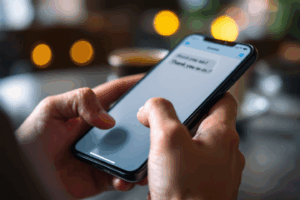 At the core of many English language conundrums lies the challenge of differentiating between words that sound alike but have entirely different meanings and functions. Two prime examples of this linguistic phenomenon are “your” and “you’re.” To communicate effectively and avoid common pitfalls, it’s essential to grasp the fundamental difference between these terms, recognizing that one signifies possession while the other is a contraction representing a state of being.
At the core of many English language conundrums lies the challenge of differentiating between words that sound alike but have entirely different meanings and functions. Two prime examples of this linguistic phenomenon are “your” and “you’re.” To communicate effectively and avoid common pitfalls, it’s essential to grasp the fundamental difference between these terms, recognizing that one signifies possession while the other is a contraction representing a state of being.
 “Your” is a possessive pronoun that indicates ownership or association with the person or people being spoken to. It signifies ownership, relationship, or association. For instance, when we say, “Your book is on the table,” we mean the book belonging to you is on the table. “Your” is all about possession, making clear who the subject or object in question belongs to.
“Your” is a possessive pronoun that indicates ownership or association with the person or people being spoken to. It signifies ownership, relationship, or association. For instance, when we say, “Your book is on the table,” we mean the book belonging to you is on the table. “Your” is all about possession, making clear who the subject or object in question belongs to.
You’re, on the other hand, is a contraction of “you are,” a straightforward abbreviation that merges the pronoun “you” with the verb “are.” Contractions like “you’re” are designed to streamline speech and writing, making language flow more naturally. For example, “You’re welcome to join us for dinner” translates to “You are welcome to join us for dinner.” Here, “you’re” is used to describe a condition or state of being related to the person being addressed.
 Mastering these terms depends on recognizing their specific uses: “your” indicates possession, while “you’re” signifies a state of being. Remembering this distinction is crucial for clear and accurate communication. Whenever you’re in doubt, a simple test can clarify which form is correct: try substituting “you are” for “you’re.” If the sentence still makes sense, then “you’re” is the right choice. If not, “your” is likely what you intend to use.
Mastering these terms depends on recognizing their specific uses: “your” indicates possession, while “you’re” signifies a state of being. Remembering this distinction is crucial for clear and accurate communication. Whenever you’re in doubt, a simple test can clarify which form is correct: try substituting “you are” for “you’re.” If the sentence still makes sense, then “you’re” is the right choice. If not, “your” is likely what you intend to use.
Grasping the basics of “your” versus “you’re” not only clarifies these terms but also enhances your overall mastery of English, enabling more precise and effective expression in everyday communication.
Exploring "Your"
Delving deeper into the possessive pronoun “your,” we uncover its significance in English communication. This term, seemingly simple, carries the weight of indicating ownership or association, an essential function that aids in the clarity and precision of our expressions. By exploring “your” further, we aim to illuminate its proper use, ensuring that its role in denoting possession becomes second nature in your daily communication.
The Significance of “Your”
“Your” plays a pivotal role in English by denoting that something belongs to the person or people being addressed. It’s a possessive pronoun that helps us express ownership, connection, or association without cumbersome repetitions or awkward constructions. From personal belongings to abstract concepts, “your” seamlessly attributes possession, making sentences clear and direct.
Examples in Use:

“Is this your idea of a joke?” (Ownership)

“Your presence at the ceremony will mean a lot to us.” (Association)
Each example showcases “your” in action, highlighting its ability to convey a sense of belonging or relation to the audience.
Tips for Remembering and Using "Your" Correctly
Association with Ownership:
Always link “your” with ownership or association. If the subject in question can be owned or is related to someone, “your” is likely the correct choice.
Replacement Technique:
Try replacing “your” with “belonging to you” in a sentence. If the sentence retains its original meaning, “your” is used correctly. For instance, “Your dedication” becomes “The dedication belonging to you.”
Contextual Awareness:
Pay attention to the context. “Your” is used when addressing someone directly or discussing something that pertains to them. It’s never used for describing the state of being.
Enhancing Clarity in Communication
The accurate use of “your” is more than a grammatical correctness; it’s about enhancing the clarity and effectiveness of communication. In both written and spoken English, using “your” appropriately ensures that your message is understood as intended, with no room for ambiguity regarding ownership or association.
Practical Application:

Incorrect: “You’re skills are impressive.”
Correct: “Your skills are impressive.”
In the incorrect example, “you’re” incorrectly suggests a state of being, while “your” correctly attributes possession of the skills to the person being addressed.
Mastering "Your" in Everyday English
 Understanding and applying the principles of “your” empowers you to communicate more effectively, whether drafting an email, engaging in conversation, or writing creatively. Remember, the essence of mastering “your” lies in recognizing its role in indicating possession and its contribution to the coherence and persuasiveness of your messages. By practicing the tips provided and remaining mindful of “your” in your everyday use, you’ll find that its correct application becomes intuitive, enhancing your English proficiency and confidence.
Understanding and applying the principles of “your” empowers you to communicate more effectively, whether drafting an email, engaging in conversation, or writing creatively. Remember, the essence of mastering “your” lies in recognizing its role in indicating possession and its contribution to the coherence and persuasiveness of your messages. By practicing the tips provided and remaining mindful of “your” in your everyday use, you’ll find that its correct application becomes intuitive, enhancing your English proficiency and confidence.
Understanding "You're" Beyond Contraction
At its core, “you’re” represents the contraction of “you are,” serving as a grammatical shortcut that merges subject and verb into a cohesive, streamlined expression. This contraction is emblematic of English’s flexibility, bridging the gap between formal and casual discourse and making interactions more fluid. It’s particularly favored in spoken English and informal writing, where brevity and ease of understanding are prized.
Examples Illuminating “You’re”:

“You’re capable of incredible things.” (Affirmation of ability)

“You’re not alone in this journey.” (Assurance of companionship)
Each example underscores “you’re” as a vehicle for expressing belief, reassurance, or any state of being directly linked to the second person.
Strategies for Mastery: "You're"
To distinguish “you’re” confidently from “your,” consider these strategies:
 Perform the Expansion Test: Regularly decompose “you’re” back into its original form, “you are.” This practice confirms its correctness in context. If the sentence loses meaning or coherence with “you are,” then a reevaluation is necessary.
Perform the Expansion Test: Regularly decompose “you’re” back into its original form, “you are.” This practice confirms its correctness in context. If the sentence loses meaning or coherence with “you are,” then a reevaluation is necessary.
 Contextualize State Over Possession: Train your mind to see “you’re” through the lens of actions and states rather than possession. “You’re” will never signify ownership but always a condition or action that “you” are experiencing.
Contextualize State Over Possession: Train your mind to see “you’re” through the lens of actions and states rather than possession. “You’re” will never signify ownership but always a condition or action that “you” are experiencing.
 Employ Mnemonics: Link “you’re” with verbs that typically follow “are” (e.g., “You’re thinking,” “You’re hoping”). This linkage solidifies its role in your vocabulary as distinctly action-oriented.
Employ Mnemonics: Link “you’re” with verbs that typically follow “are” (e.g., “You’re thinking,” “You’re hoping”). This linkage solidifies its role in your vocabulary as distinctly action-oriented.
Navigating Common Errors with “You’re”
The misuse of “you’re” often stems from confusion with “your” or a lack of understanding regarding contractions. Recognizing these errors is the first step toward avoiding them:
Illustrative Corrections:

Incorrect: “Your invited to the event next week.”
Correct: “You’re invited to the event next week.”
In the incorrect example, the intended meaning is to convey an invitation (a state of being invited), necessitating the use of “you’re” rather than “your.”
Enhancing Communication with "You're"
Embracing “you’re” in your daily language not only showcases grammatical acumen but also enriches your expressions, making them more engaging and direct. Its proper use signals an understanding of English’s nuances, fostering clearer, more vibrant interactions. By consistently applying the outlined strategies and remaining vigilant about common pitfalls, the distinction between “your” and “you’re” will become intuitive. This mastery not only bolsters your grammatical precision but also elevates the quality of your communication, ensuring that your intended messages are received loud and clear.
Frequent Errors in Everyday Communication
The misuse of “your” and “you’re” often stems from their phonetic similarity, leading to frequent errors in both spoken and written English. Here are some typical mistakes:
Confusing Possession with Being:
Using “your” when the intention is to describe a state of being or action (“Your late for the meeting” instead of “You’re late for the meeting”).
Contracting Incorrectly:
Opting for “you’re” when indicating possession or belonging (“I think you’re coat is in the other room” should be “I think your coat is in the other room”).
These errors not only disrupt the flow of communication but also detract from the credibility of the speaker or writer.
Strategies for Proofreading and Self-Checking
Mitigating these errors involves a combination of mindfulness, practice, and strategic proofreading. Here are some effective strategies:
Substitution Check

For every “you’re” in your text, substitute “you are.” If the sentence still makes sense, “you’re” is used correctly. If not, replace it with “your.” This simple test can quickly clarify which form is appropriate.
Read Aloud

Reading your text aloud can help catch errors that might be overlooked when reading silently. Hearing “your” and “you’re” in context often clarifies which is correct based on the sentence’s meaning.
Peer Review

Having someone else review your work can be invaluable. A fresh set of eyes might catch mistakes you’ve glossed over, including the misuse of “your” and “you’re.”
Practice Makes Perfect

Regularly practicing writing sentences that correctly use both “your” and “you’re” can improve your instinctual understanding of their proper usage. Consider creating your own exercises or seeking out online resources for practice.
Mind the Context

Always consider the sentence’s context. If you’re indicating possession, “your” is the go-to choice. If you’re contracting “you are,” then “you’re” is correct. Keeping the context in mind can prevent most mistakes.
Incorporating these techniques into your writing process can greatly diminish errors in using “your” and “you’re,” thus improving both your written and spoken English. Remember, mastering the distinction between these two terms is a vital step toward clear and effective communication.
Conclusion
 Embarking on the journey to demystify the confusion between “your” and “you’re” has not only illuminated these terms’ distinct roles within the English language but also underscored the profound impact that such seemingly minor distinctions can have on the clarity and effectiveness of our communication. Throughout this exploration, we have delved deep into the heart of English grammar, unearthing the nuances that define “your” as a possessive pronoun indicating ownership, and “you’re,” a contraction for “you are,” signifying a state of being.
Embarking on the journey to demystify the confusion between “your” and “you’re” has not only illuminated these terms’ distinct roles within the English language but also underscored the profound impact that such seemingly minor distinctions can have on the clarity and effectiveness of our communication. Throughout this exploration, we have delved deep into the heart of English grammar, unearthing the nuances that define “your” as a possessive pronoun indicating ownership, and “you’re,” a contraction for “you are,” signifying a state of being.
The critical insights we’ve shared include the foundational understanding of “your” and “you’re,” highlighting their grammatical categories and primary uses. “Your” is integral for denoting possession, attributing something to the person addressed, thereby enriching our sentences with clarity about whom or what we refer. Conversely, “you’re” simplifies expressions of being, condition, or action related to the subject, making our language more fluid and accessible.
 By engaging with practical examples, we’ve illustrated the correct application of each term, providing a concrete foundation upon which to build your understanding and usage. The exercises and quizzes offered have been designed not merely as tests of knowledge but as stepping stones towards greater confidence in employing these terms accurately in everyday communication.
By engaging with practical examples, we’ve illustrated the correct application of each term, providing a concrete foundation upon which to build your understanding and usage. The exercises and quizzes offered have been designed not merely as tests of knowledge but as stepping stones towards greater confidence in employing these terms accurately in everyday communication.
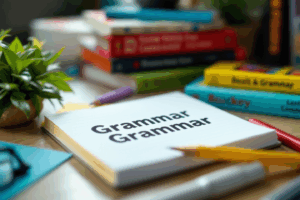 Moreover, we’ve outlined common mistakes to arm you with the awareness necessary to navigate these pitfalls successfully. Strategies such as the substitution test for “you’re” and contextual awareness for “your” have been emphasized as vital tools in your grammatical arsenal, ensuring that you can distinguish between possession and state of being with ease.
Moreover, we’ve outlined common mistakes to arm you with the awareness necessary to navigate these pitfalls successfully. Strategies such as the substitution test for “you’re” and contextual awareness for “your” have been emphasized as vital tools in your grammatical arsenal, ensuring that you can distinguish between possession and state of being with ease.
As we conclude this comprehensive exploration, the call to action is clear and compelling: Embrace the simplicity and clarity that correct usage of “your” and “you’re” brings to English communication. This is not merely about adhering to grammatical rules but about seizing the opportunity to express yourself with precision and confidence. The mastery of these terms opens up avenues for clearer, more impactful communication, whether in personal conversations, professional emails, or creative writing endeavors.
 Let this guide be a reminder that the power of clear communication lies in the details. The correct use of “your” and “you’re” is emblematic of a broader commitment to expressing ourselves thoughtfully and accurately. As you move forward, carry with you the knowledge and strategies shared here, and watch as doors open to deeper understanding and connection with your audience.
Let this guide be a reminder that the power of clear communication lies in the details. The correct use of “your” and “you’re” is emblematic of a broader commitment to expressing ourselves thoughtfully and accurately. As you move forward, carry with you the knowledge and strategies shared here, and watch as doors open to deeper understanding and connection with your audience.
In the end, mastering “your” and “you’re” is more than a grammatical achievement; it’s a step towards honing your voice in the vast and vibrant world of English communication. Embrace this journey with enthusiasm, and let the clarity of your language reflect the depth of your thoughts and the sincerity of your intentions.
References
- Merriam-Webster. (n.d.). Your. In Merriam-Webster.com dictionary. Retrieved from https://www.merriam-webster.com/dictionary/your
- Merriam-Webster. (n.d.). You’re. In Merriam-Webster.com dictionary. Retrieved from https://www.merriam-webster.com/dictionary/you%27re
- Purdue University. (n.d.). Using Pronouns Clearly. Purdue Online Writing Lab. Retrieved from https://owl.purdue.edu/owl/general_writing/grammar/pronouns/index.html
- Grammarly. (n.d.). Your vs. You’re: What’s the Difference? Grammarly Blog. Retrieved from https://www.grammarly.com/blog/your-youre/
Latest Blogs

Enhancing Daily Life with Basic Video Editing Skills
Video Editing Blogs “Let’s Learn, Explore, and Connect to the World” Enhancing Daily Life with Basic Video Editing Skills Introduction In an era where digital

How Mindfulness Can Transform Your Mental Health: A Beginner’s Guide
Mental and Emotional Health “Let’s Learn, Explore, and Connect to the World” How Mindfulness Can Transform Your Mental Health: A Beginner’s Guide Introduction Being mindful
Reading comprehension quiz
Check out our books and more!

Comic Collections : A Compilation of Daily Professional and Casual Conversations (Book 2)
Master conversation with ‘Comic Collections’ (Book 2) by Cassia North. A fun, insightful guide to professional and casual communication, packed with engaging comics and practical tips for every interaction!
Check out our Blogs!
Read our everyday blogs and gain new knowledge, skills, and inspiration to support your learning journey here in SEKAEL.


Explore Mental Health Blogs to gain insights and tips on self-care, emotional balance, and personal well-being.
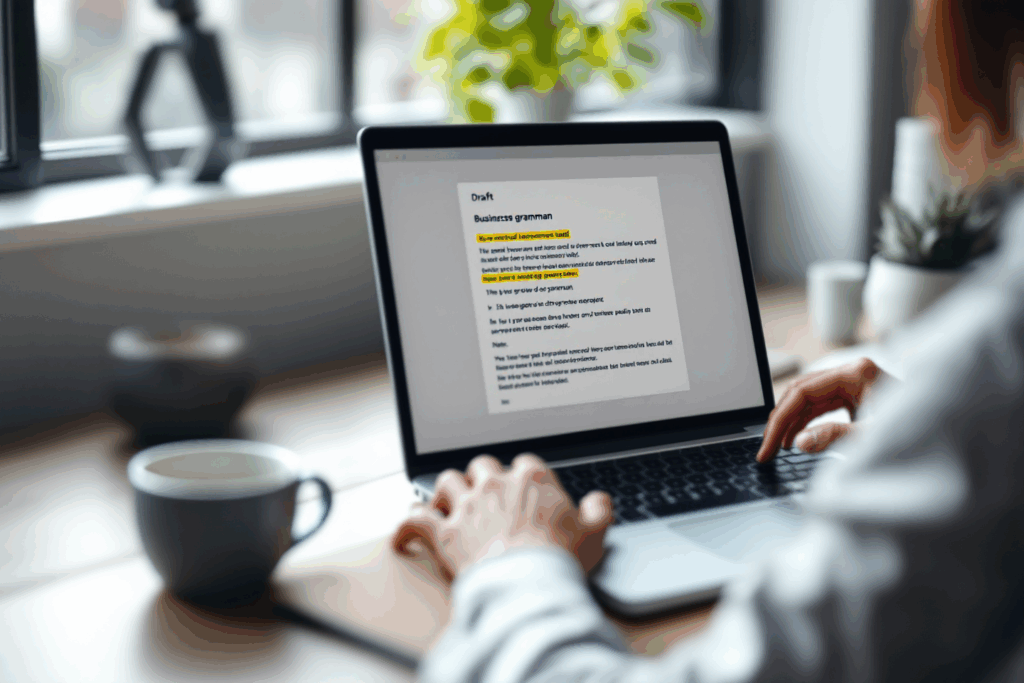



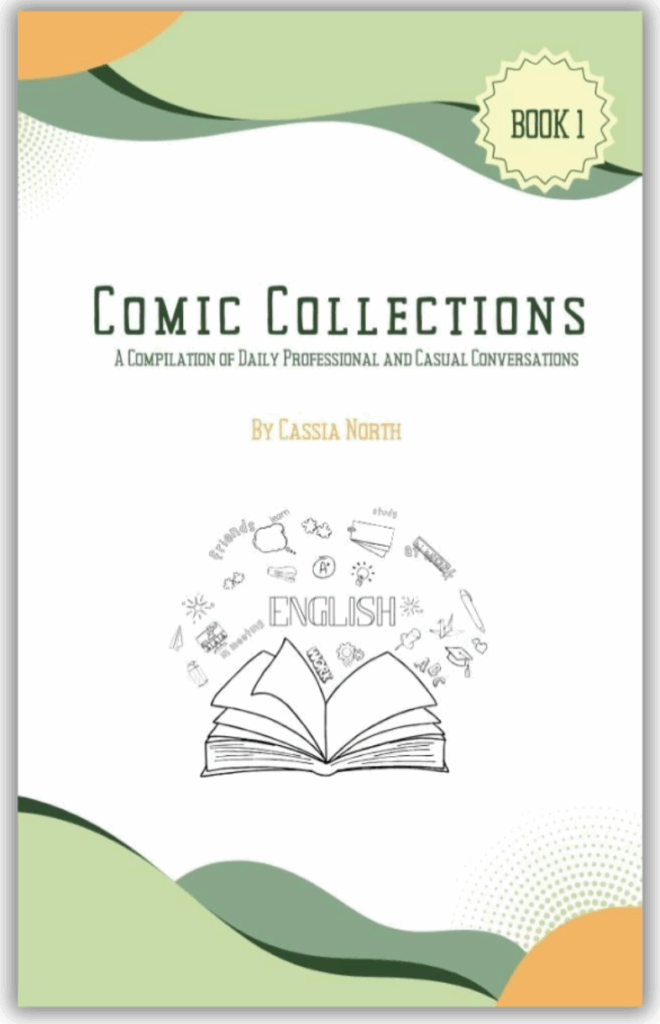






 Personal stories and case studies further illustrate mindfulness’s impact on mental health. Many people have reported that practicing mindfulness has helped them to make significant progress in reducing their symptoms of stress, anxiety, and depression while also increasing their overall happiness and satisfaction with life. The following accounts exhibit how practicing mindfulness can help individuals enhance their mental well-being.
Personal stories and case studies further illustrate mindfulness’s impact on mental health. Many people have reported that practicing mindfulness has helped them to make significant progress in reducing their symptoms of stress, anxiety, and depression while also increasing their overall happiness and satisfaction with life. The following accounts exhibit how practicing mindfulness can help individuals enhance their mental well-being.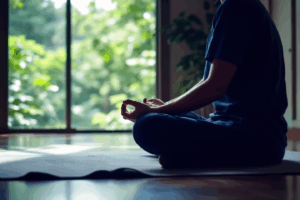






 The integration of mindfulness into psychological therapy has revolutionized traditional approaches to mental health treatment. Mindfulness-Based Cognitive Therapy (MBCT) is a standout example, combining cognitive behavioral therapy (CBT) principles with mindfulness strategies. Developed to prevent the recurrence of depression, MBCT teaches individuals to disengage from automatic negative thought patterns that can trigger depressive episodes.
The integration of mindfulness into psychological therapy has revolutionized traditional approaches to mental health treatment. Mindfulness-Based Cognitive Therapy (MBCT) is a standout example, combining cognitive behavioral therapy (CBT) principles with mindfulness strategies. Developed to prevent the recurrence of depression, MBCT teaches individuals to disengage from automatic negative thought patterns that can trigger depressive episodes. Their sessions, finding that these practices help clients develop a more compassionate and non-judgmental awareness of their thoughts and feelings. Changing one’s perspective is an effective way for people to better manage their emotional reactions and minimize the impact of stressful thoughts and feelings on their mental well-being, which is crucial when it comes to handling stress. This shift in outlook is essential in coping with stress and can result in a more optimistic approach to life. By altering the way they view challenging situations, people can maintain better control over their emotions and avoid harmful thought patterns that can contribute to mental health issues. This shift in mindset is an effective way to manage stress and improve overall well-being.
Their sessions, finding that these practices help clients develop a more compassionate and non-judgmental awareness of their thoughts and feelings. Changing one’s perspective is an effective way for people to better manage their emotional reactions and minimize the impact of stressful thoughts and feelings on their mental well-being, which is crucial when it comes to handling stress. This shift in outlook is essential in coping with stress and can result in a more optimistic approach to life. By altering the way they view challenging situations, people can maintain better control over their emotions and avoid harmful thought patterns that can contribute to mental health issues. This shift in mindset is an effective way to manage stress and improve overall well-being. The effectiveness of mindfulness in therapy is supported by a growing body of research. Studies have shown that incorporating mindfulness techniques can result in a notable reduction in symptoms related to anxiety, depression, and PTSD. This makes mindfulness a valuable addition to more conventional therapeutic methods. Furthermore, mindfulness encourages a proactive approach to mental health, empowering individuals with tools they can use outside of therapy to maintain and improve their mental well-being.
The effectiveness of mindfulness in therapy is supported by a growing body of research. Studies have shown that incorporating mindfulness techniques can result in a notable reduction in symptoms related to anxiety, depression, and PTSD. This makes mindfulness a valuable addition to more conventional therapeutic methods. Furthermore, mindfulness encourages a proactive approach to mental health, empowering individuals with tools they can use outside of therapy to maintain and improve their mental well-being. By fostering an attitude of acceptance and present-moment awareness, mindfulness in therapy helps individuals confront their challenges with resilience and clarity. This approach not only aids in the healing process but also contributes to a more fulfilling and balanced life.
By fostering an attitude of acceptance and present-moment awareness, mindfulness in therapy helps individuals confront their challenges with resilience and clarity. This approach not only aids in the healing process but also contributes to a more fulfilling and balanced life.






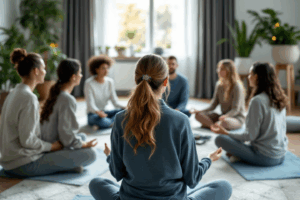





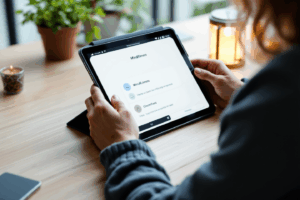


 Mindfulness offers a profound tool for navigating the complexities of modern life with grace and resilience. By anchoring us in the present moment, mindfulness cuts through the noise of daily distractions and unveils a space of clarity and calm within ourselves. This journey, though personal and unique for each individual, holds universal truths about the power of awareness, acceptance, and the capacity for transformation.
Mindfulness offers a profound tool for navigating the complexities of modern life with grace and resilience. By anchoring us in the present moment, mindfulness cuts through the noise of daily distractions and unveils a space of clarity and calm within ourselves. This journey, though personal and unique for each individual, holds universal truths about the power of awareness, acceptance, and the capacity for transformation. Now that we see How Mindfulness Can Transform Your Mental Health by looking at the benefits of mindfulness extend far beyond the moments of meditation; they weave through every aspect of our lives, enhancing our relationships, productivity, and overall satisfaction. As we move forward, the invitation is to continue exploring mindfulness with curiosity and openness, integrating its practices into our daily routines and moments of need.
Now that we see How Mindfulness Can Transform Your Mental Health by looking at the benefits of mindfulness extend far beyond the moments of meditation; they weave through every aspect of our lives, enhancing our relationships, productivity, and overall satisfaction. As we move forward, the invitation is to continue exploring mindfulness with curiosity and openness, integrating its practices into our daily routines and moments of need. The path of mindfulness is one of continuous discovery and growth. There may be challenges and setbacks, but each step taken is a step toward greater mental health and a fuller, more engaged life. Let mindfulness be your guide, a constant cowell-being in the pursuit of well-being and inner peace.
The path of mindfulness is one of continuous discovery and growth. There may be challenges and setbacks, but each step taken is a step toward greater mental health and a fuller, more engaged life. Let mindfulness be your guide, a constant cowell-being in the pursuit of well-being and inner peace.








 In today’s relentlessly fast-paced world, the line between pushing oneself for success and falling into burnout has become dangerously thin. Burnout, characterized by emotional, physical, and mental fatigue resulting from intense and extended stress, has become a silent epidemic among individuals and workers trying to keep up with the increasing pressures of work and personal life. It’s a condition that sneaks up quietly, often mistaken for mere tiredness or a temporary bout of stress. Yet, its impact can be profound and long-lasting, affecting health, happiness, and job performance.
In today’s relentlessly fast-paced world, the line between pushing oneself for success and falling into burnout has become dangerously thin. Burnout, characterized by emotional, physical, and mental fatigue resulting from intense and extended stress, has become a silent epidemic among individuals and workers trying to keep up with the increasing pressures of work and personal life. It’s a condition that sneaks up quietly, often mistaken for mere tiredness or a temporary bout of stress. Yet, its impact can be profound and long-lasting, affecting health, happiness, and job performance. Understanding and recognizing the signs of burnout is the first critical step toward recovery. However, identifying burnout can be tricky, especially when its symptoms overlap with everyday stress. This makes it all the more essential to distinguish between being just stressed and being burnt out. Stress involves excessive demands: too many pressures that exhaust you physically and mentally. Yet, those under stress often believe that managing everything will improve their situation. In contrast, burnout relates to a deficiency: feeling empty, lacking motivation, and no longer caring. Those suffering from burnout typically see no hopeful prospects for improvement in their circumstances.
Understanding and recognizing the signs of burnout is the first critical step toward recovery. However, identifying burnout can be tricky, especially when its symptoms overlap with everyday stress. This makes it all the more essential to distinguish between being just stressed and being burnt out. Stress involves excessive demands: too many pressures that exhaust you physically and mentally. Yet, those under stress often believe that managing everything will improve their situation. In contrast, burnout relates to a deficiency: feeling empty, lacking motivation, and no longer caring. Those suffering from burnout typically see no hopeful prospects for improvement in their circumstances. You might be on the burnout spectrum if you’re feeling constantly drained, detached, and disillusioned. The good news is that burnout is manageable and reversible. By using both self-help techniques and professional assistance, you can restore your balance and find renewed pleasure in your work and life. This guide delves into the ten signs that signify you might be experiencing burnout and offers practical, actionable strategies to embark on recovery. By acknowledging the problem and taking decisive steps to address it, you can rebuild your reserves of energy and enthusiasm and find a more sustainable way of living and working.
You might be on the burnout spectrum if you’re feeling constantly drained, detached, and disillusioned. The good news is that burnout is manageable and reversible. By using both self-help techniques and professional assistance, you can restore your balance and find renewed pleasure in your work and life. This guide delves into the ten signs that signify you might be experiencing burnout and offers practical, actionable strategies to embark on recovery. By acknowledging the problem and taking decisive steps to address it, you can rebuild your reserves of energy and enthusiasm and find a more sustainable way of living and working.



















 As we navigate the complexities of modern life, the shadow of burnout looms large, threatening to undermine our health, happiness, and professional success. Recognizing the signs of burnout is the first critical step toward reclaiming your well-being and vitality. The journey from burnout to recovery is personal and can require a multifaceted approach, incorporating changes to your work habits, lifestyle, and mindset.
As we navigate the complexities of modern life, the shadow of burnout looms large, threatening to undermine our health, happiness, and professional success. Recognizing the signs of burnout is the first critical step toward reclaiming your well-being and vitality. The journey from burnout to recovery is personal and can require a multifaceted approach, incorporating changes to your work habits, lifestyle, and mindset. Beyond individual efforts, there’s a growing recognition of the need for systemic changes to address the root causes of burnout. Employers play a crucial role in creating work environments that promote work-life balance, support mental health, and recognize the importance of rest and recovery. Creating a work environment that emphasizes both physical and mental health can stop burnout before it starts and keep everyone feeling their best.
Beyond individual efforts, there’s a growing recognition of the need for systemic changes to address the root causes of burnout. Employers play a crucial role in creating work environments that promote work-life balance, support mental health, and recognize the importance of rest and recovery. Creating a work environment that emphasizes both physical and mental health can stop burnout before it starts and keep everyone feeling their best. Burnout is a signal that something in your life is out of alignment. It’s an invitation to pause, reflect, and make meaningful changes that support your health and happiness. By acknowledging the signs of burnout and taking proactive steps toward recovery, you can navigate back to a life of balance, fulfillment, and joy. Remember, you’re not alone in this journey. With the right support and strategies, recovery is possible and can be a transformative experience that leads to a more satisfying and sustainable way of living.
Burnout is a signal that something in your life is out of alignment. It’s an invitation to pause, reflect, and make meaningful changes that support your health and happiness. By acknowledging the signs of burnout and taking proactive steps toward recovery, you can navigate back to a life of balance, fulfillment, and joy. Remember, you’re not alone in this journey. With the right support and strategies, recovery is possible and can be a transformative experience that leads to a more satisfying and sustainable way of living.

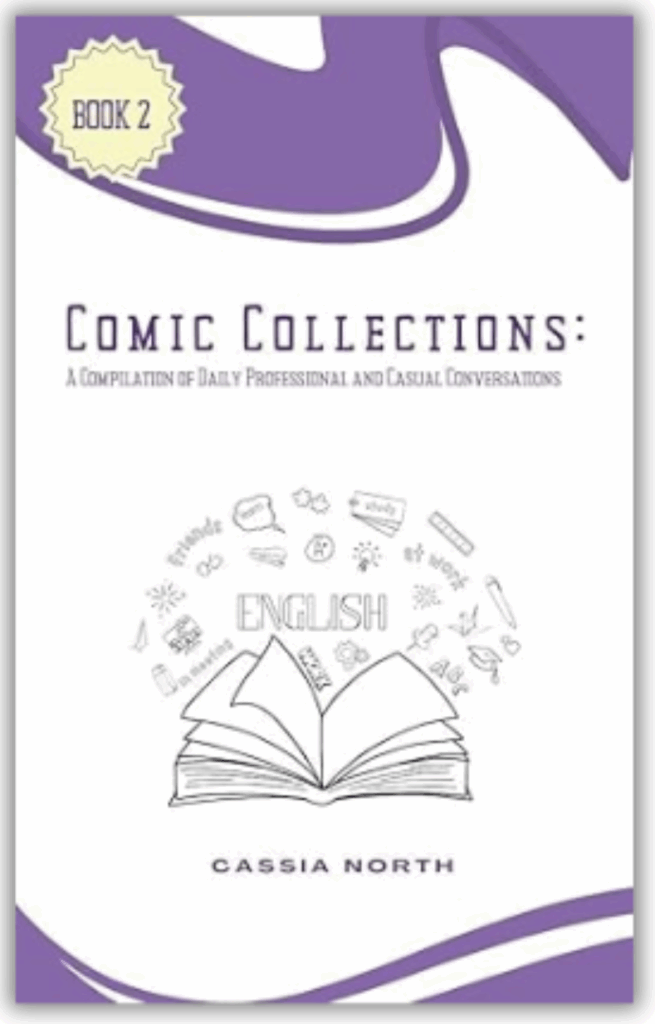







 This guide aims to shed light on the multifaceted nature of anxiety, providing a comprehensive exploration of strategies and tools to manage it effectively. It delves into both psychological and practical approaches, offering a balanced perspective on anxiety management.
This guide aims to shed light on the multifaceted nature of anxiety, providing a comprehensive exploration of strategies and tools to manage it effectively. It delves into both psychological and practical approaches, offering a balanced perspective on anxiety management.










 The right strategies and tools can make a significant difference in this journey. Psychological approaches like cognitive-behavioral therapy can aid in understanding and altering thought patterns that contribute to anxiety. Physical strategies, including regular exercise and a healthy diet, can reduce the physical symptoms of anxiety. Lifestyle strategies, such as mindfulness and meditation, can help you stay present and focused, reducing anxiety’s impact on your day-to-day life.
The right strategies and tools can make a significant difference in this journey. Psychological approaches like cognitive-behavioral therapy can aid in understanding and altering thought patterns that contribute to anxiety. Physical strategies, including regular exercise and a healthy diet, can reduce the physical symptoms of anxiety. Lifestyle strategies, such as mindfulness and meditation, can help you stay present and focused, reducing anxiety’s impact on your day-to-day life. Keep in mind that seeking professional assistance when necessary is not an indication of weakness, but a demonstration of strength. It requires bravery to ask for help. Therapists and counselors are trained experts who can offer you more strategies and tools to cope with your anxiety.
Keep in mind that seeking professional assistance when necessary is not an indication of weakness, but a demonstration of strength. It requires bravery to ask for help. Therapists and counselors are trained experts who can offer you more strategies and tools to cope with your anxiety.



 In the vast landscape of English writing, where every punctuation mark and every word choice matters, there lies a tiny symbol that often determines the clarity of a sentence: the apostrophe. This seemingly insignificant mark carries the weight of meaning on its slender shoulders, distinguishing possession from contraction, days of the week from decades of history. Yet, amidst its various uses, the apostrophe presents a peculiar challenge perplexing writers for generations: the distinction between “its” and “it’s.” This dilemma, often called the “Apostrophe Catastrophe,” is not just a common stumbling block for English learners but also native speakers and seasoned writers alike.
In the vast landscape of English writing, where every punctuation mark and every word choice matters, there lies a tiny symbol that often determines the clarity of a sentence: the apostrophe. This seemingly insignificant mark carries the weight of meaning on its slender shoulders, distinguishing possession from contraction, days of the week from decades of history. Yet, amidst its various uses, the apostrophe presents a peculiar challenge perplexing writers for generations: the distinction between “its” and “it’s.” This dilemma, often called the “Apostrophe Catastrophe,” is not just a common stumbling block for English learners but also native speakers and seasoned writers alike. The confusion between “its” and “it’s” might seem trivial to the untrained eye. Still, it’s a litmus test for precision in language that can significantly impact the readability and professionalism of a text. “Its,” the possessive form of “it,” and “it’s,” a contraction for “it is” or “it has,” occupy very different roles in the fabric of English grammar. Yet, they are frequently misused, leading to misunderstandings or the dilution of the intended message.
The confusion between “its” and “it’s” might seem trivial to the untrained eye. Still, it’s a litmus test for precision in language that can significantly impact the readability and professionalism of a text. “Its,” the possessive form of “it,” and “it’s,” a contraction for “it is” or “it has,” occupy very different roles in the fabric of English grammar. Yet, they are frequently misused, leading to misunderstandings or the dilution of the intended message. In this guide, we embark on a journey to untangle the “Apostrophe Catastrophe,” offering a beacon of clarity for those navigating the nuanced waters of English punctuation. By dissecting the roles, rules, and applications of “its” and “it’s,” this blog aims to illuminate the correct usage of these terms and reinforce the importance of attention to detail in written communication. Through examples, explanations, and tips, we will master the distinction between “its” and “it’s,” transforming this common source of error into a testament to our linguistic precision and prowess.
In this guide, we embark on a journey to untangle the “Apostrophe Catastrophe,” offering a beacon of clarity for those navigating the nuanced waters of English punctuation. By dissecting the roles, rules, and applications of “its” and “it’s,” this blog aims to illuminate the correct usage of these terms and reinforce the importance of attention to detail in written communication. Through examples, explanations, and tips, we will master the distinction between “its” and “it’s,” transforming this common source of error into a testament to our linguistic precision and prowess.


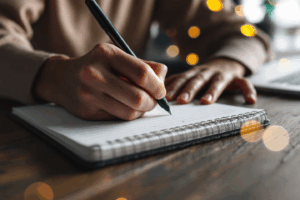 As mentioned, if you can replace “it’s” with “it is” or “it has” and the sentence still makes sense, then using “it’s” is appropriate.
As mentioned, if you can replace “it’s” with “it is” or “it has” and the sentence still makes sense, then using “it’s” is appropriate. Remember that “it’s” always signifies a contraction. If you intend to convey possession or attribute qualities to “it,” “it’s” is not the correct choice.
Remember that “it’s” always signifies a contraction. If you intend to convey possession or attribute qualities to “it,” “it’s” is not the correct choice. Sometimes, reading your sentence aloud with “it is” or “it has” in place of “it’s” can clarify whether the contraction fits the context.
Sometimes, reading your sentence aloud with “it is” or “it has” in place of “it’s” can clarify whether the contraction fits the context. Despite its simplicity, “it’s” often ends up misapplied in instances where possession is intended, leading to errors that can detract from credibility and clarity. Avoiding this mistake requires constant vigilance and practice, always keeping the function of the contraction at the forefront of your mind.
Despite its simplicity, “it’s” often ends up misapplied in instances where possession is intended, leading to errors that can detract from credibility and clarity. Avoiding this mistake requires constant vigilance and practice, always keeping the function of the contraction at the forefront of your mind. Embracing “it’s” in your writing entails recognizing and applying its role as a contraction effectively. While it’s tempting to overcorrect and shy away from using “it’s” due to fear of misuse, remember that contractions play a vital role in creating a natural, approachable tone in writing. Mastery of “it’s” not only showcases grammatical competence but also enhances the readability and engagement of your text.
Embracing “it’s” in your writing entails recognizing and applying its role as a contraction effectively. While it’s tempting to overcorrect and shy away from using “it’s” due to fear of misuse, remember that contractions play a vital role in creating a natural, approachable tone in writing. Mastery of “it’s” not only showcases grammatical competence but also enhances the readability and engagement of your text.


 Before using “its,” consider whether you are indicating possession. If the sentence attributes ownership or a belonging relationship to “it,” “its” is likely the correct choice.
Before using “its,” consider whether you are indicating possession. If the sentence attributes ownership or a belonging relationship to “it,” “its” is likely the correct choice. Remember that “its,” as a possessive pronoun, never includes an apostrophe. This rule sets it apart from “it’s” and aligns it with other possessive pronouns.
Remember that “its,” as a possessive pronoun, never includes an apostrophe. This rule sets it apart from “it’s” and aligns it with other possessive pronouns.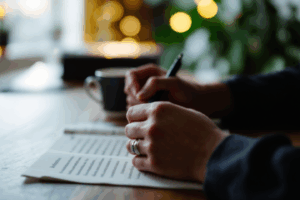 If unsure about using “its,” read the sentence with the phrase “belonging to it.” If the sentence makes sense, then “its” is the correct form to use.
If unsure about using “its,” read the sentence with the phrase “belonging to it.” If the sentence makes sense, then “its” is the correct form to use.
 The journey through the nuanced terrain of “its” and “it’s” is fraught with potential for error. These common mistakes, however, are not mere stumbling blocks but opportunities for learning and refinement. Recognizing and understanding these errors are crucial steps toward ensuring precision in your use of English. Here, we’ll explore typical pitfalls involving “its” and “it’s” and offer strategies to navigate around them, enhancing your writing with every word.
The journey through the nuanced terrain of “its” and “it’s” is fraught with potential for error. These common mistakes, however, are not mere stumbling blocks but opportunities for learning and refinement. Recognizing and understanding these errors are crucial steps toward ensuring precision in your use of English. Here, we’ll explore typical pitfalls involving “its” and “it’s” and offer strategies to navigate around them, enhancing your writing with every word.


 The quest to conquer the “Apostrophe Catastrophe” may seem daunting at first, but by mastering the intricacies of “its” vs. “it’s,” you’ve taken a significant step towards achieving grammatical prowess. Remember, the key lies in understanding the fundamental distinction between possessive pronouns and contractions. With this knowledge and by applying the provided tips and tricks, you can transform these once-dreaded terms into powerful tools for clear and impactful communication. So, the next time you encounter “its” or “it’s,” pause for a moment, consider its role in the sentence, and confidently choose the correct form, taking your writing to a whole new level of sophistication and accuracy.
The quest to conquer the “Apostrophe Catastrophe” may seem daunting at first, but by mastering the intricacies of “its” vs. “it’s,” you’ve taken a significant step towards achieving grammatical prowess. Remember, the key lies in understanding the fundamental distinction between possessive pronouns and contractions. With this knowledge and by applying the provided tips and tricks, you can transform these once-dreaded terms into powerful tools for clear and impactful communication. So, the next time you encounter “its” or “it’s,” pause for a moment, consider its role in the sentence, and confidently choose the correct form, taking your writing to a whole new level of sophistication and accuracy. Bonus Tip:
Bonus Tip:  Congratulations! You have begun a journey to master the “Apostrophe Catastrophe.” With regular practice and close attention to detail, you can excel at distinguishing “its” from “it’s” and significantly improve your writing.
Congratulations! You have begun a journey to master the “Apostrophe Catastrophe.” With regular practice and close attention to detail, you can excel at distinguishing “its” from “it’s” and significantly improve your writing.

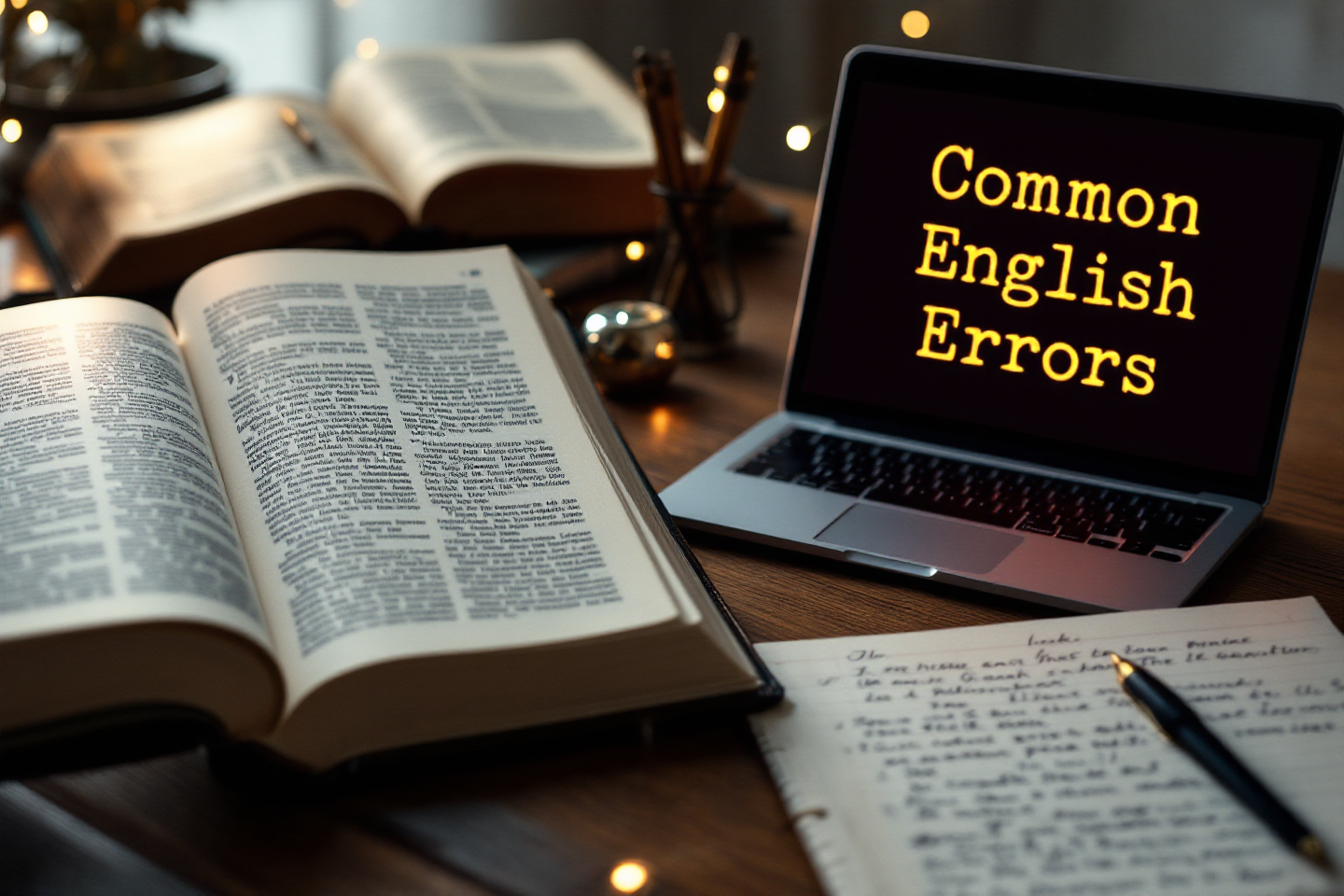

 Language, the cornerstone of human interaction, is a powerful tool that shapes our thoughts, emotions, and actions. It serves as the conduit through which we express our deepest sentiments, articulate our most innovative ideas, and forge connections with others. In the intricate ballet of conversation and written discourse, the importance of clarity and precision cannot be overstated. English, with its vast lexicon and intricate grammatical structure, provides immense opportunities for expressive depth. However, it also presents significant challenges, including frequently misused words that can distort the intended meaning of our messages, leading to misunderstandings or ambiguity.
Language, the cornerstone of human interaction, is a powerful tool that shapes our thoughts, emotions, and actions. It serves as the conduit through which we express our deepest sentiments, articulate our most innovative ideas, and forge connections with others. In the intricate ballet of conversation and written discourse, the importance of clarity and precision cannot be overstated. English, with its vast lexicon and intricate grammatical structure, provides immense opportunities for expressive depth. However, it also presents significant challenges, including frequently misused words that can distort the intended meaning of our messages, leading to misunderstandings or ambiguity. This blog post aims to delve into the top 10 commonly misused words in English, providing a spotlight on their correct usage through practical examples and explanations. We will dissect each pair of words, explore their meanings, and demonstrate their appropriate use in sentences. By demystifying these common errors, we aim to empower you, the reader, to navigate the complexities of English with greater confidence and precision. Our goal is to transform these linguistic pitfalls into stepping stones towards more effective communication. So, let’s embark on this enlightening journey together, exploring the fascinating intricacies of the English language.
This blog post aims to delve into the top 10 commonly misused words in English, providing a spotlight on their correct usage through practical examples and explanations. We will dissect each pair of words, explore their meanings, and demonstrate their appropriate use in sentences. By demystifying these common errors, we aim to empower you, the reader, to navigate the complexities of English with greater confidence and precision. Our goal is to transform these linguistic pitfalls into stepping stones towards more effective communication. So, let’s embark on this enlightening journey together, exploring the fascinating intricacies of the English language. Words are far more than mere assemblages of alphabets. They are the fundamental building blocks of communication, the instruments we wield to convey our thoughts, emotions, and concepts. They are the bridges that connect minds, the keys that unlock understanding, and the threads that weave the tapestry of human interaction.
Words are far more than mere assemblages of alphabets. They are the fundamental building blocks of communication, the instruments we wield to convey our thoughts, emotions, and concepts. They are the bridges that connect minds, the keys that unlock understanding, and the threads that weave the tapestry of human interaction. However, with this immense power comes an equally significant responsibility. The misuse of words can lead to a plethora of undesirable outcomes. Misunderstandings can arise when words are used incorrectly, muddying the waters of communication. Miscommunications can occur, leading to confusion and potentially causing unnecessary conflicts. Even the subtlest misuse of a word can alter the intended meaning of a message, leading to a disconnect between the sender and the receiver.
However, with this immense power comes an equally significant responsibility. The misuse of words can lead to a plethora of undesirable outcomes. Misunderstandings can arise when words are used incorrectly, muddying the waters of communication. Miscommunications can occur, leading to confusion and potentially causing unnecessary conflicts. Even the subtlest misuse of a word can alter the intended meaning of a message, leading to a disconnect between the sender and the receiver. That’s why the correct understanding and usage of words are of paramount importance. It’s not just about adhering to grammatical rules or avoiding linguistic faux pas. It’s about ensuring that our messages are accurately conveyed and correctly interpreted. It’s about fostering clear, effective, and meaningful communication.
That’s why the correct understanding and usage of words are of paramount importance. It’s not just about adhering to grammatical rules or avoiding linguistic faux pas. It’s about ensuring that our messages are accurately conveyed and correctly interpreted. It’s about fostering clear, effective, and meaningful communication.


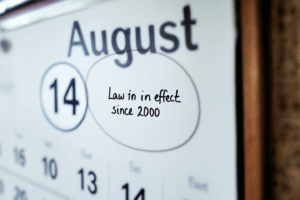





















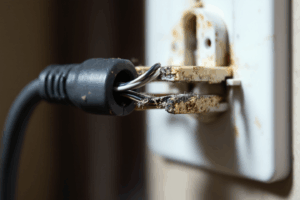














 The English language is a vast and beautiful expanse, offering rich means of expression and connection. Yet, navigating its complexities requires attention to detail and a willingness to engage with its nuances. The commonly misused words discussed herein represent just a fraction of the challenges English users face. By understanding and applying the correct usage of these words, we can enhance our communication, ensuring that our messages are received as intended.
The English language is a vast and beautiful expanse, offering rich means of expression and connection. Yet, navigating its complexities requires attention to detail and a willingness to engage with its nuances. The commonly misused words discussed herein represent just a fraction of the challenges English users face. By understanding and applying the correct usage of these words, we can enhance our communication, ensuring that our messages are received as intended. Language is not static; it evolves with us, reflecting changes in society, culture, and technology. As we continue to explore and master English, let’s approach it with curiosity and openness, embracing the learning process. Keep in mind that every mistake presents a chance to learn and advance in our language journey.
Language is not static; it evolves with us, reflecting changes in society, culture, and technology. As we continue to explore and master English, let’s approach it with curiosity and openness, embracing the learning process. Keep in mind that every mistake presents a chance to learn and advance in our language journey. Let us strive for clarity, precision, and understanding in all our communications. Let us be mindful of the impact our words can have, and choose them with care. Let us seek to use language not just as a tool for communication, but as a means to bring about positive change.
Let us strive for clarity, precision, and understanding in all our communications. Let us be mindful of the impact our words can have, and choose them with care. Let us seek to use language not just as a tool for communication, but as a means to bring about positive change. 


